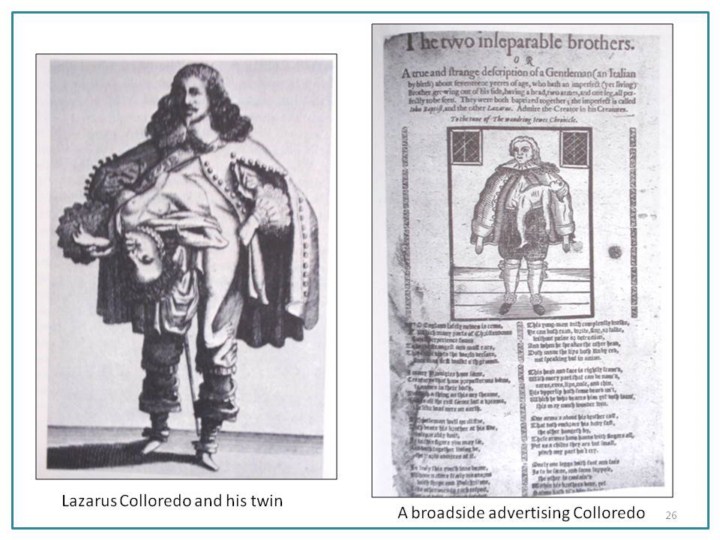| front |1 |2 |3 |4 |5 |6 |7 |8 |9 |10 |11 |12 |13 |14 |15 |16 |17 |18 |19 |20 |21 |22 |23 |24 |25 |26 |27 |28 |29 |30 |31 |32 |33 |34 |35 |36 |37 |38 |39 |40 |41 |42 |43 |44 |45 |46 |review |
 |
Parents of a disabled infant could often expect hundreds of people to visit their child, and many profited from the experience by charging an admission fee. Infants who survived could expect a life on display. Since beggars often faked injuries for sympathy, skeptics who had paid the admission price were allowed to touch and thoroughly investigate the individual.38 Even after death, preserved or mummified individuals were placed on display. Lazarus Colloredo’s life offers a wonderful example. Born with a parasitic twin attached to his abdomen, Colloredo made his living by traveling across Europe. After printing broadsides to raise publicity, he displayed himself and his twin for all those willing to pay the admission price. Colloredo visited small towns and royalty throughout the 17th century.39
|